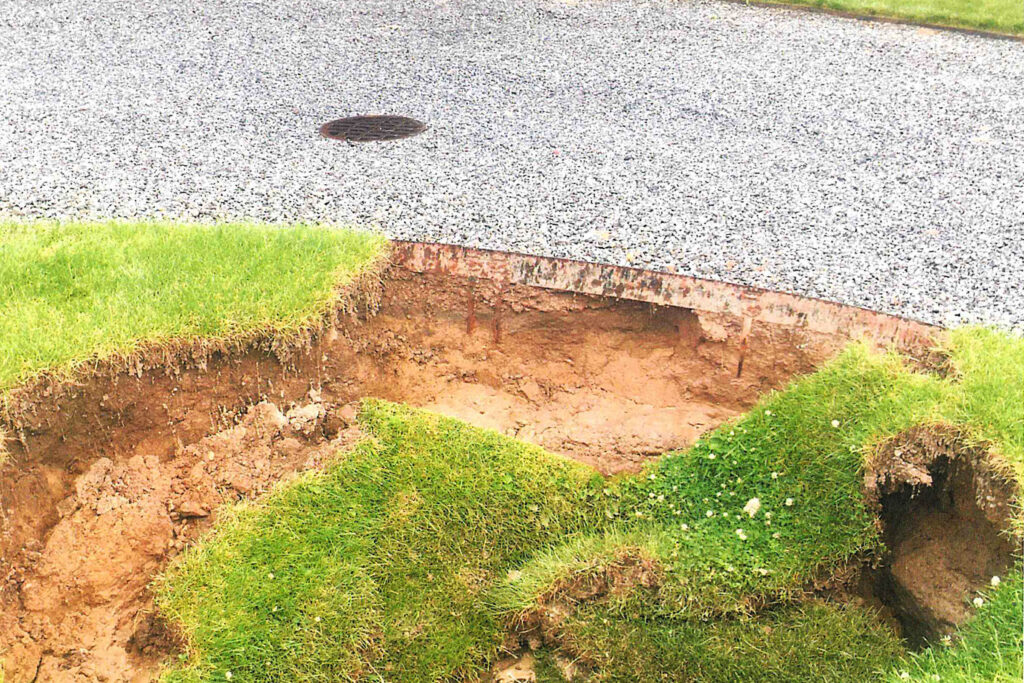Pandemic is the cause
People are taking refuge from the pandemic in their East End homes. More bodies, more laundry, more showers and local septic systems are failing at record numbers. The reasons for this are pretty straightforward.
Septic systems are not sewers
Many people who have relocated to East Hampton are accustomed to their wastewater being treated by sewers which can handle a wider range of materials in the waste stream. In a November 5, 2020 article in the Southampton Press, Skip Norsic of the sanitation company Emil Norsic & Son commented “Right from March, as people started to move out here… our business has increased quite a bit.” Unfamiliar with the constraints of septic systems, people have been throwing things like baby wipes, paper towels and cat litter down the drain. These products are sure to clog a septic system and should not be flushed.
What does septic failure mean?
Images of drains backing up can be pretty horrifying. Sometimes, septic systems can cave in and a large hole in the ground will develop. If you do find a collapsed septic system on your property, take steps immediately to mark off the area to prevent people from getting too close. People have died or been seriously injured after falling into collapsed cesspools/septic tanks.

Signs of septic system failure include:
- Drains backing up and gurgling sounds in the plumbing
- Bathtubs, showers and sinks draining very slowly
- Standing water around the septic tank or drain field
- Bad odors
The good news is that when a septic system fails, the Suffolk County Health Department and the Town of East Hampton will expedite your new permit. In East Hampton Town the law requires all failed septic systems to be replaced by I/A (Innovative/Alternative) low-nitrogen systems. According to Mellissa Winslow, an Environmental Analyst for the Town of East Hampton “We have seen a big increase in homeowner participation in the Town’s Septic Incentive Program through 2020, largely due to significantly increased usage during the pandemic which caused system failures. Each one of these replacements, taking outdated and non-functioning cesspools out of commission, is a win for water quality and a step in the right direction.”
Now is the time
But why wait until your septic system fails? Suffolk County didn’t approve the I/A systems until 2016 so any system installed prior to that date is a conventional system. Conventional systems do not remove nitrogen from the waste stream. Nitrogen is the main culprit in triggering harmful algae blooms, and at Georgica Pond over 50% of the nitrogen entering the pond comes from wastewater. To encourage homeowners Mellissa Winslow added “The Town has removed the income requirements and increased the maximum funding up to $20,000 so it’s a great time for waterfront homeowners to upgrade their septic systems while funding is still available. It is important for everyone to upgrade, but we will see a direct impact in a shorter time-frame by having these systems replaced with advanced treatment.”
Winter is a good time to start the process of upgrading your septic system. An I/A system will add value to your home, help protect our potable drinking water supply and improve the water quality of Georgica Pond. Here are the steps to take to get started:
- Locate your survey and hire an engineer from the Suffolk County approved list (PDF)
- The engineer will design the best system for your home
- Complete the funding incentive applications for the Town (applicable to Village residents too) and County and State incentives:
Septic Upgrade Eligibility Verification Form (PDF)
Septic Improvement Program – Grant Process Overview (PDF) - Apply for the Suffolk County Department of Health septic permit. In addition, in most cases only an East Hampton Town Septic Registry permit or Village Building Permit will be needed on top of the County permit.
- Hire a contractor to install the new system. Approved Vendor List (PDF)
There are several companies now that will provide a comprehensive service to cover all these steps for you.
